Scaffolding Companies Nappanee
Find top Scaffolding Company in Nappanee
Get up to 3 Construction Scaffolding quotes for your project today! Compare profiles, reviews, accreditations, portfolio, etc... and choose the best deal.
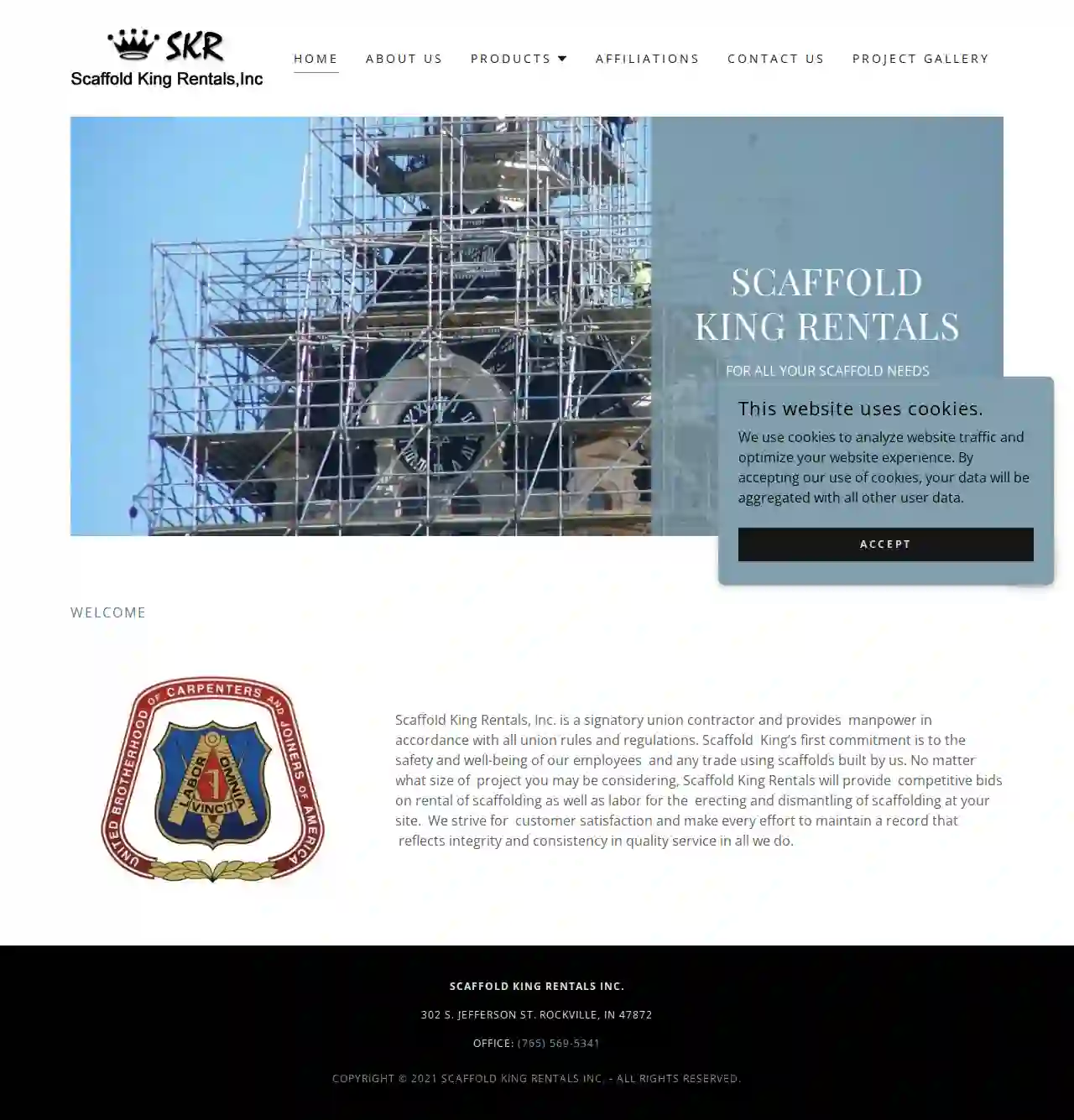
Scaffold King Rentals Inc
4.52 reviewsRockville, IN, 302 S. Jefferson St., 47872, USScaffold King Rentals Inc. is a family-oriented company that strives to be the best Specialty Contractor providing a team of highly Qualified, Dependable, and Professional employees with the goal of completing all projects Safely, on Time, and on Budget while being proactive in the fields of Safety, Communication, and Service and by Utilizing Training, Technology, and Experience. Scaffold King Rentals, Inc. is a signatory union contractor and provides manpower in accordance with all union rules and regulations. All of our foreman are held to high standards to insure pride, safety, and quality craftsmanship in our work. All SKR foreman maintain a 30-hour scaffold course card and complete a 40-hour OSHA class. First aid and CPR classes and AED cards are also required for our foreman. Scaffold King’s first commitment is to the safety and well-being of our employees and any trade using scaffolds built by us. We are safety certified by the CCS (Coalition of Construction Safety). No matter what size of project you may be considering, Scaffold King Rentals will provide competitive bids on rental of scaffolding as well as labor for the erecting and dismantling of the scaffolding at your site. We strive for customer satisfaction and make every effort to maintain a record that reflects integrity and consistency in quality service in all we do.
- Services
- Why Us?
- Accreditations
- Our Team
- Testimonials
- Gallery
Get Quote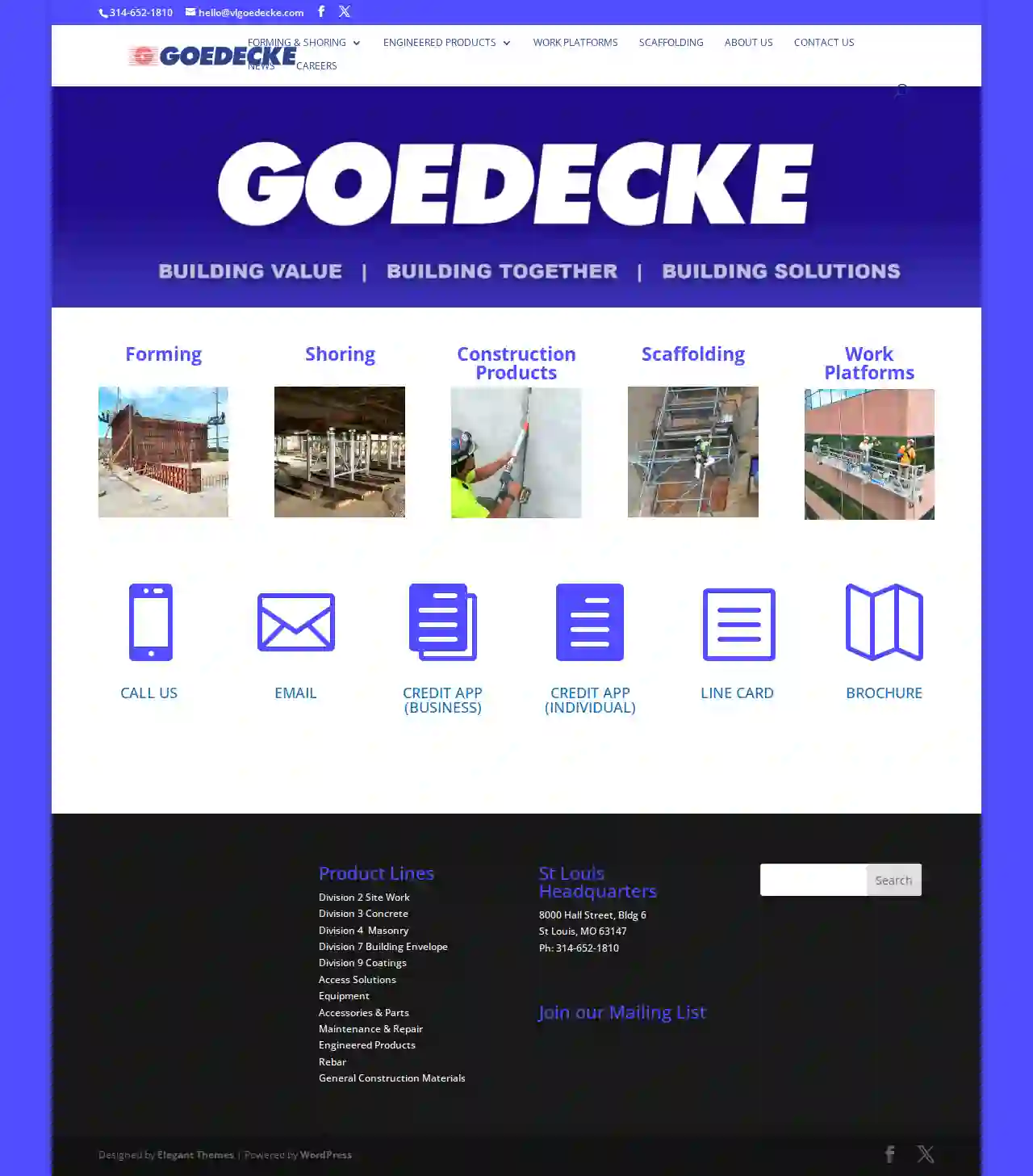
Goedecke (Evansville)
53 reviews8000 Hall Street, Bldg 6, St Louis, 63147, USGoedecke is a leading provider of construction products and services. With a rich history and a mission to deliver exceptional results, we offer a range of solutions including Forming & Shoring, Engineered Products, and more. Our team of experts is dedicated to providing top-notch services and products to our clients. Contact us today to learn more.
- Services
- Why Us?
- Gallery
Get Quote
Layher Scaffolding
51 reviewsHouston, TX, 8225 Hansen Road, 77075, USLayher is a leading provider of scaffolding systems and solutions. With a focus on innovation, quality, and safety, Layher offers a range of products and services to meet the needs of various industries. From scaffolding systems to protective systems, shoring, and access systems, Layher provides comprehensive solutions for construction, industrial, and commercial projects. With a strong commitment to sustainability and partnership, Layher is dedicated to delivering exceptional results and exceeding customer expectations.
- Services
- Why Us?
- Accreditations
- Our Team
- Testimonials
- Gallery
Get Quote
Menards
4.1Evansville, USMenards is a leading home improvement retailer with a rich history dating back to 1958. Founded by John Menard Jr., the company has grown to become one of the largest home improvement retailers in the United States. With a strong commitment to quality and customer satisfaction, Menards offers a wide range of products and services to help customers achieve their home improvement goals. From building materials and tools to lawn and garden supplies, Menards has everything needed to complete any project. With over 300 stores across the Midwest, Menards is dedicated to providing exceptional service and value to its customers.
- Services
- Why Us?
Get Quote
Gribbins Insulation & Scaffolding - Home Office
4.718 reviews1400 East Columbia Street, Evansville, 47711, USGribbins Insulation & Scaffolding is a commercial and industrial mechanical insulation and scaffolding contractor founded in 1985, serving the Midwestern United States. The company's mission is to maximize customer satisfaction by providing the highest levels of safety, quality, and productivity, while maintaining personal and professional integrity, leading to employee fulfillment and company profit. Gribbins offers insulation and scaffolding services for new and existing customers, making it a one-stop shop for industrial and commercial mechanical insulation and scaffolding.
- Services
- Why Us?
- Accreditations
- Our Team
- Testimonials
- Gallery
Get Quote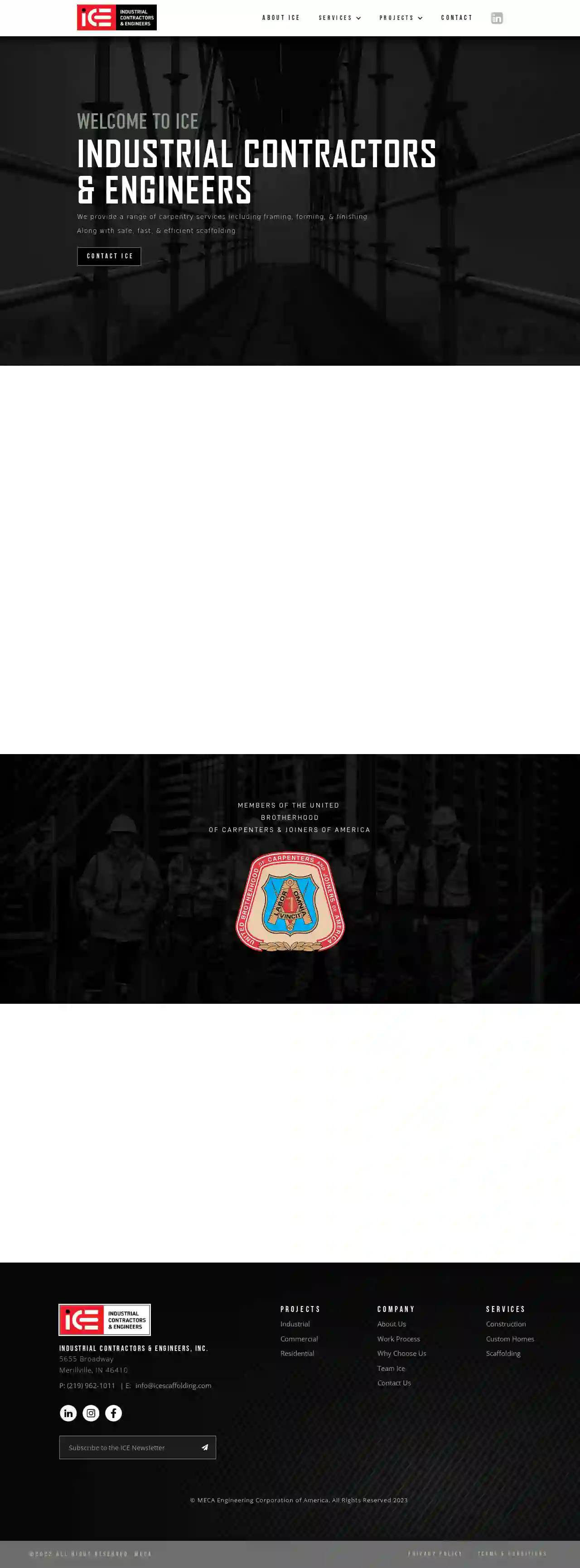
ICE Scaffolding
32 reviews5655 Broadway, Merrillville, 46410, USAt ICE Industrial Contractors & Engineers, we provide a range of carpentry services including framing, forming, & finishing. Along with safe, fast, & efficient scaffolding. Our team is dedicated to delivering outstanding results and possesses the specialized knowledge and exceptional service that distinguishes us from our competitors. We serve across all sectors, including industrial, commercial, and residential. Our industrial engineering, safety, and scaffolding services provide safe and efficient support for construction, maintenance, and repair projects in the most challenging of sites. Our commercial construction division offers comprehensive building services, delivering high-quality, cost-effective, and sustainable structures that meet the needs of business. Our residential division, Ice Homes, blends Union quality craftsmanship & personalized design and build services, creating unique and luxurious living spaces which fit the needs of your modern lifestyle.
- Services
- Why Us?
- Accreditations
- Our Team
- Gallery
Get Quote
Menards
4.3Indianapolis, USMenards is a leading home improvement store that offers a wide range of products and services to help customers enhance their homes. With a strong commitment to customer satisfaction, Menards strives to provide the best shopping experience possible. From building materials to kitchen and bath, electrical, plumbing, and more, Menards has everything you need for your home improvement projects. Their dedicated team is always ready to assist with any questions or needs.
- Services
- Why Us?
Get Quote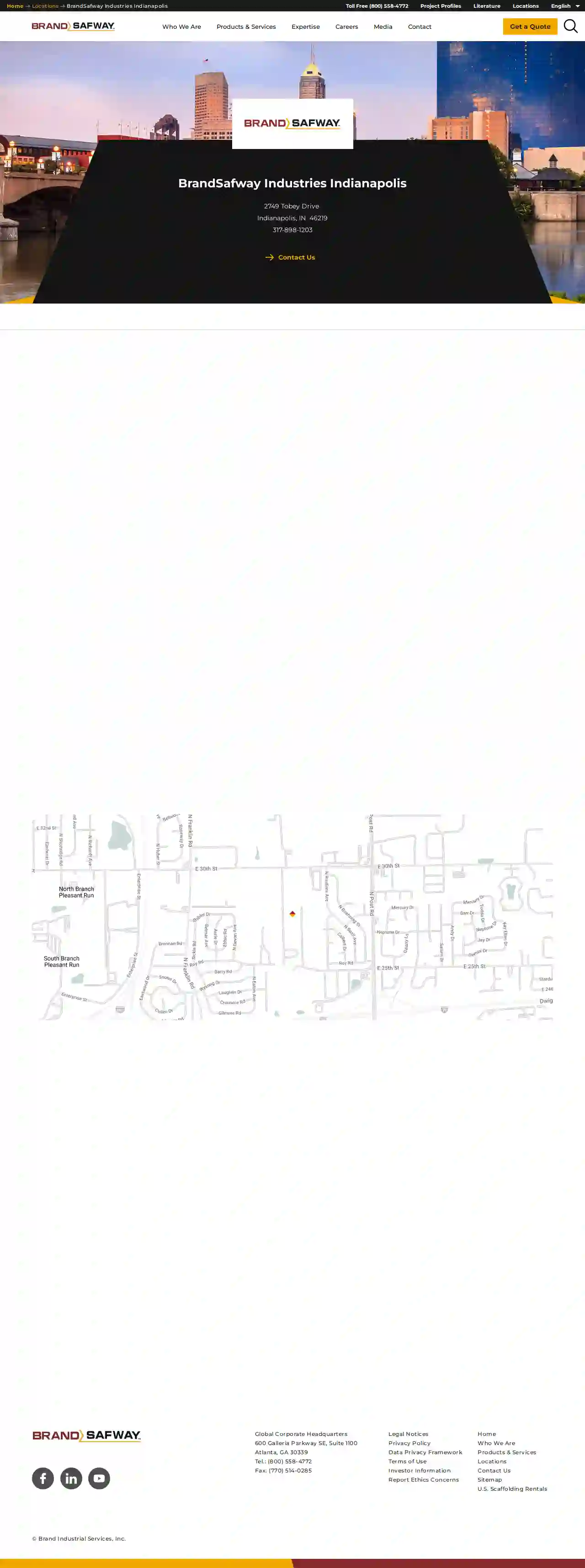
BrandSafway Industries Indianapolis
4.29 reviews111 Monument Circle, Suite 1000, 111 Monument Circle Suite 1000, Indianapolis, 46204, USBrandSafeway is a leading provider of comprehensive safety and security solutions for businesses of all sizes. With a proven track record of success, we help our clients create safer and more secure environments for their employees, customers, and assets. Our team of experienced professionals is dedicated to providing customized solutions that meet the unique needs of each client. We offer a wide range of services, including risk assessments, security system design and installation, training and education, and emergency response planning. Our mission is to be the trusted partner for businesses seeking to enhance their safety and security posture. We are committed to providing our clients with the highest level of service and support, ensuring their peace of mind.
- Services
- Why Us?
Get Quote
Menards
4.2123 Main St, Springfield, 12345, USMenards is a leading home improvement store that offers a wide range of products and services to help customers enhance their homes. With a strong commitment to customer satisfaction, Menards strives to provide the best shopping experience possible. From building materials to home decor, Menards has everything you need to make your house a home.
- Services
- Why Us?
- Accreditations
- Our Team
- Testimonials
Get Quote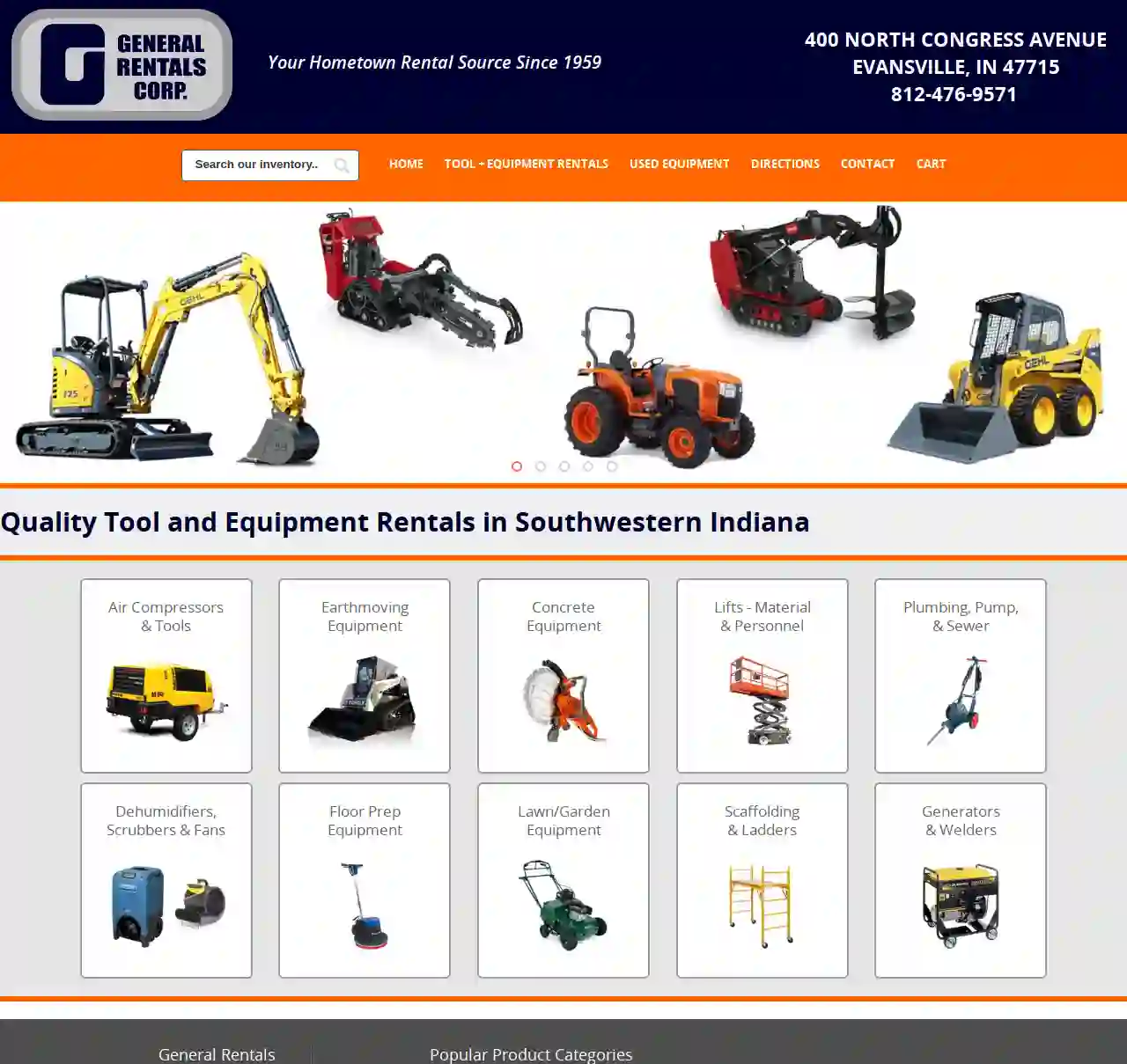
General Rentals Corporation
4.870 reviews400 North Congress Avenue, Evansville, 47715, USGeneral Rentals is your hometown rental source since 1959, providing quality tool and equipment rentals in Southwestern Indiana. With a wide range of products including air compressors, earthmoving equipment, concrete equipment, lifts, plumbing, pump, and sewer, dehumidifiers, scrubbers, fans, floor prep equipment, lawn and garden equipment, scaffolding, ladders, generators, welders, and more, we cater to the needs of various industries. Our commitment to customer satisfaction and quality service has made us a trusted name in the region. We serve the Tri-State Area, including Evansville IN, Darmstadt IN, Chandler IN, Boonville IN, Blairsville IN, Mt. Vernon IN, Newburgh IN, Owensboro KY, Henderson KY, and New Haven IL.
- Services
- Why Us?
- Accreditations
- Our Team
- Testimonials
- Gallery
Get Quote
Over 2,353+ Scaffolding Companies registered
Our scaffolding contractors operate in Nappanee and beyond!
ScaffoldingHQ has curated and vetted Top Scaffolding Contractors near Nappanee. Find a trustworthy contractor today.
Frequently Asked Questions About Scaffolding Companies
- Encroaches onto public property (sidewalks, roads): Permits are usually needed from the local council or highway authority.
- Exceeds a certain height: Scaffolding above a specified height often requires a permit.
- Is erected in a conservation area or near a listed building: Special considerations and permits may apply.
- Mobile Elevated Work Platforms (MEWPs): Scissor lifts, boom lifts, and other MEWPs offer flexible access for specific tasks.
- Mast Climbing Work Platforms (MCWPs): Ideal for high-rise construction, providing a stable working platform that can be raised incrementally.
- Suspended Access Equipment: Ropes and harnesses used for specific tasks like window cleaning or façade repairs.
- Ladders and Step Ladders: For shorter durations and limited working heights, provided they are used safely and appropriately.
- Project Size and Complexity: The height, configuration, and accessibility of the scaffolding will influence the amount of materials and labor required.
- Scaffolding Type: Different scaffolding systems (tube and clamp, system scaffolding, suspended scaffolding) have varying costs.
- Duration of Rental: The length of time you need the scaffolding will affect the overall rental price.
- Location: Labor costs and material availability can differ based on your location.
- Additional Services: Some companies may offer additional services like erection, dismantling, or transportation, which can add to the cost.
- Hire Professionals: Just like erection, dismantling should be done by qualified and experienced scaffolding erectors.
- Reverse the Erection Process: The dismantling process should generally follow the reverse order of erection.
- Clear the Area: Ensure the area below is free from people and obstacles.
- Lower Materials Safely: Use ropes or other safe methods to lower dismantled components to the ground.
- Inspect Components: As components are removed, inspect them for damage and store them properly for future use.
Do I need a permit for scaffolding in the USA?
What are some alternatives to traditional scaffolding?
How much does scaffolding cost to hire in the USA?
How do I dismantle scaffolding safely?
Do I need a permit for scaffolding in the USA?
- Encroaches onto public property (sidewalks, roads): Permits are usually needed from the local council or highway authority.
- Exceeds a certain height: Scaffolding above a specified height often requires a permit.
- Is erected in a conservation area or near a listed building: Special considerations and permits may apply.
What are some alternatives to traditional scaffolding?
- Mobile Elevated Work Platforms (MEWPs): Scissor lifts, boom lifts, and other MEWPs offer flexible access for specific tasks.
- Mast Climbing Work Platforms (MCWPs): Ideal for high-rise construction, providing a stable working platform that can be raised incrementally.
- Suspended Access Equipment: Ropes and harnesses used for specific tasks like window cleaning or façade repairs.
- Ladders and Step Ladders: For shorter durations and limited working heights, provided they are used safely and appropriately.
How much does scaffolding cost to hire in the USA?
- Project Size and Complexity: The height, configuration, and accessibility of the scaffolding will influence the amount of materials and labor required.
- Scaffolding Type: Different scaffolding systems (tube and clamp, system scaffolding, suspended scaffolding) have varying costs.
- Duration of Rental: The length of time you need the scaffolding will affect the overall rental price.
- Location: Labor costs and material availability can differ based on your location.
- Additional Services: Some companies may offer additional services like erection, dismantling, or transportation, which can add to the cost.
How do I dismantle scaffolding safely?
- Hire Professionals: Just like erection, dismantling should be done by qualified and experienced scaffolding erectors.
- Reverse the Erection Process: The dismantling process should generally follow the reverse order of erection.
- Clear the Area: Ensure the area below is free from people and obstacles.
- Lower Materials Safely: Use ropes or other safe methods to lower dismantled components to the ground.
- Inspect Components: As components are removed, inspect them for damage and store them properly for future use.